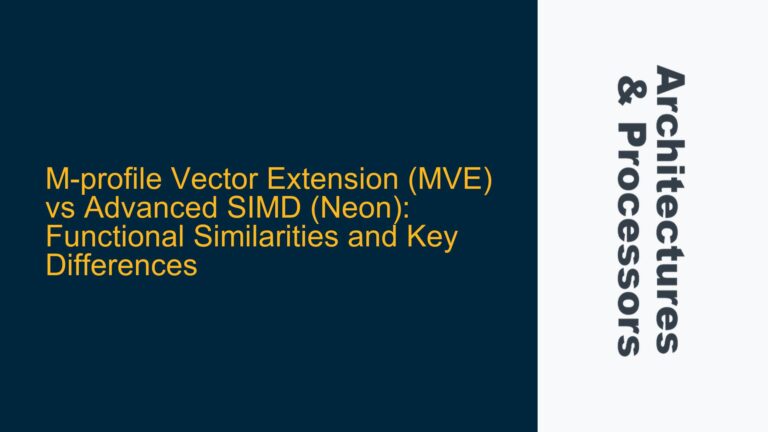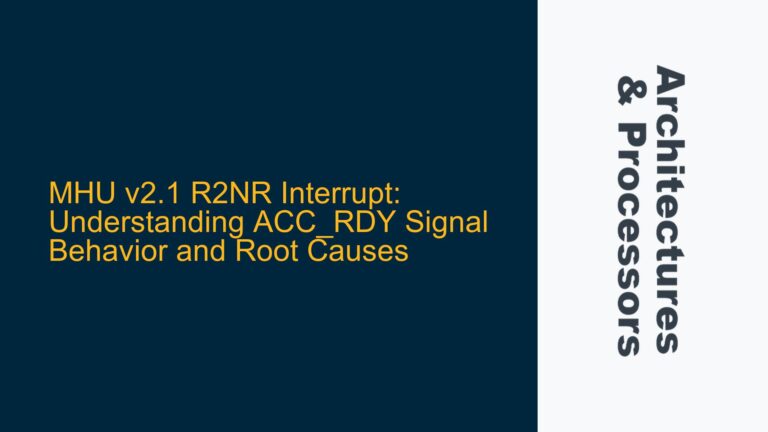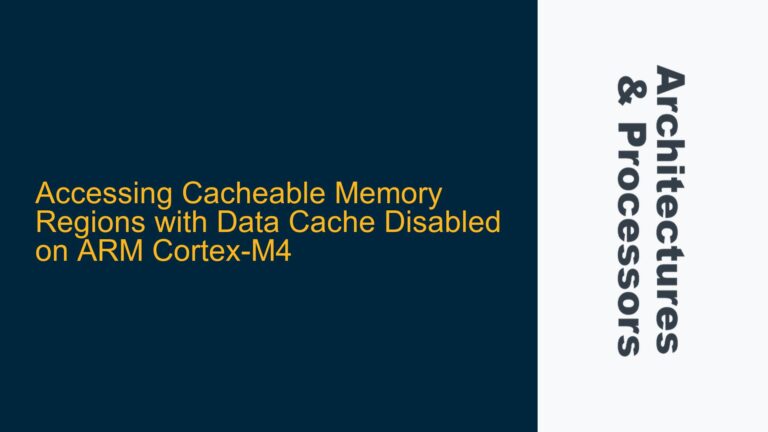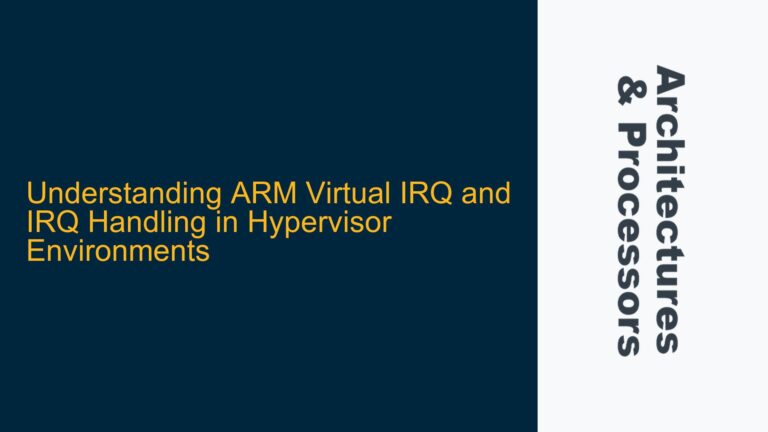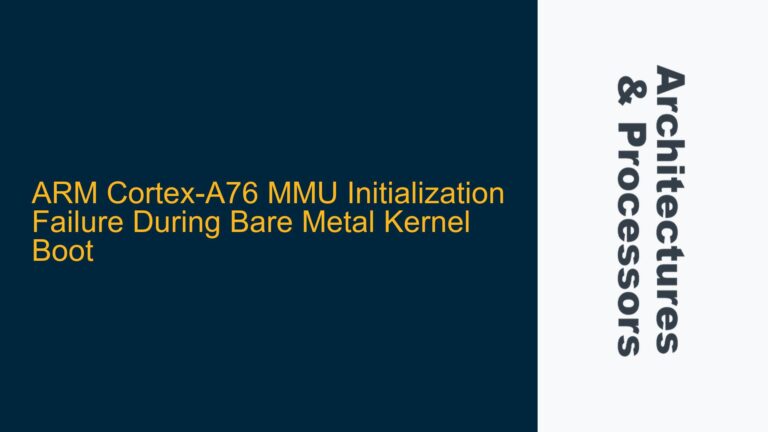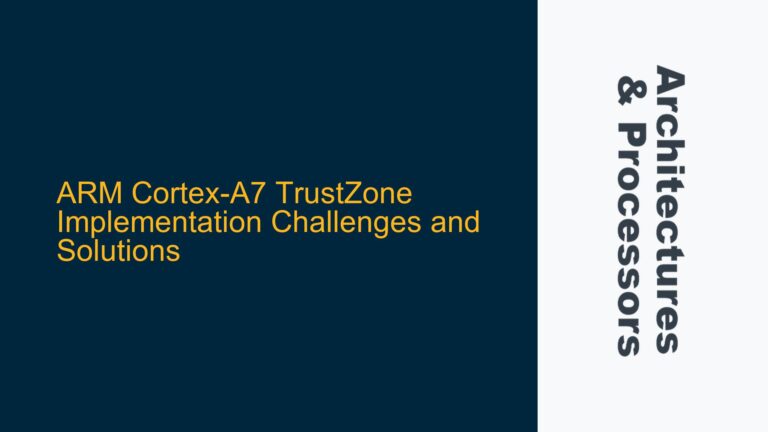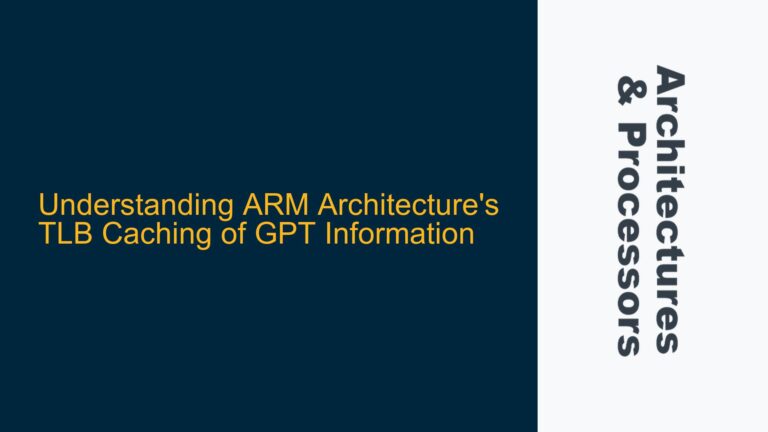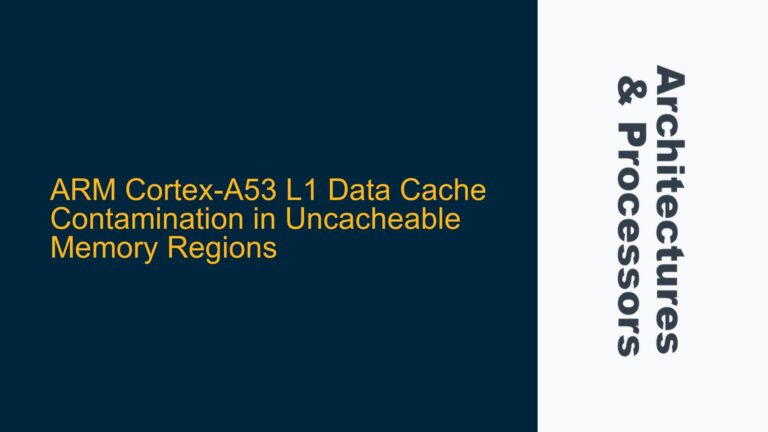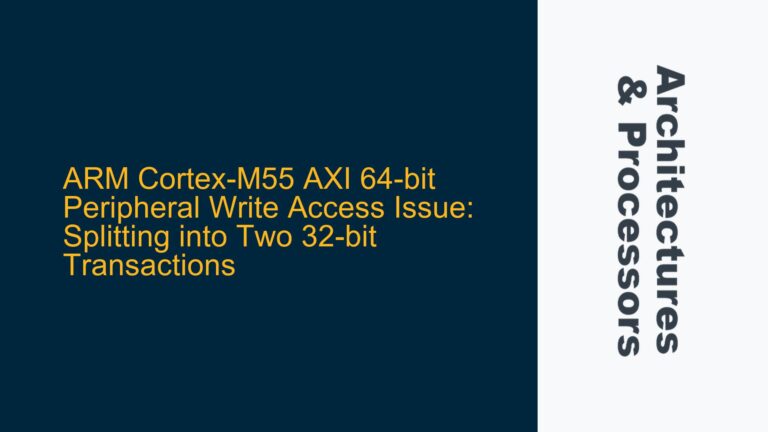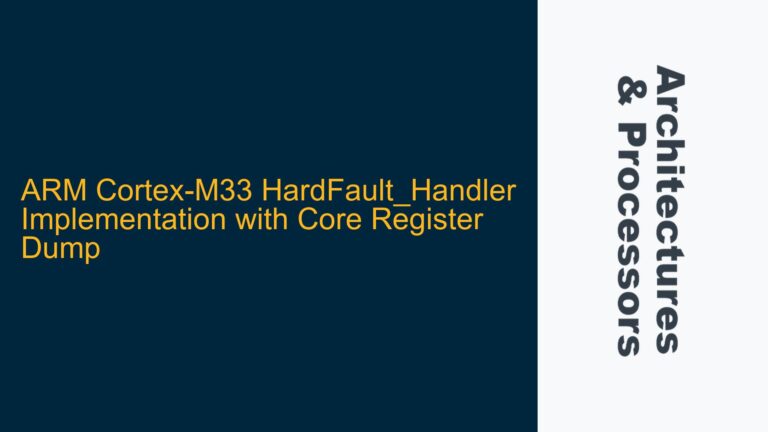M-profile Vector Extension (MVE) vs Advanced SIMD (Neon): Functional Similarities and Key Differences
ARM Cortex-M MVE and Cortex-A Neon Intrinsics: Functional Overlap and Divergence The ARM Cortex-M series, particularly those supporting the M-profile Vector Extension (MVE), and the Cortex-A series, which leverages Advanced SIMD (Neon) intrinsics, are both designed to accelerate vectorized operations in embedded systems. However, their architectural goals, use cases, and implementation details differ significantly, despite…
